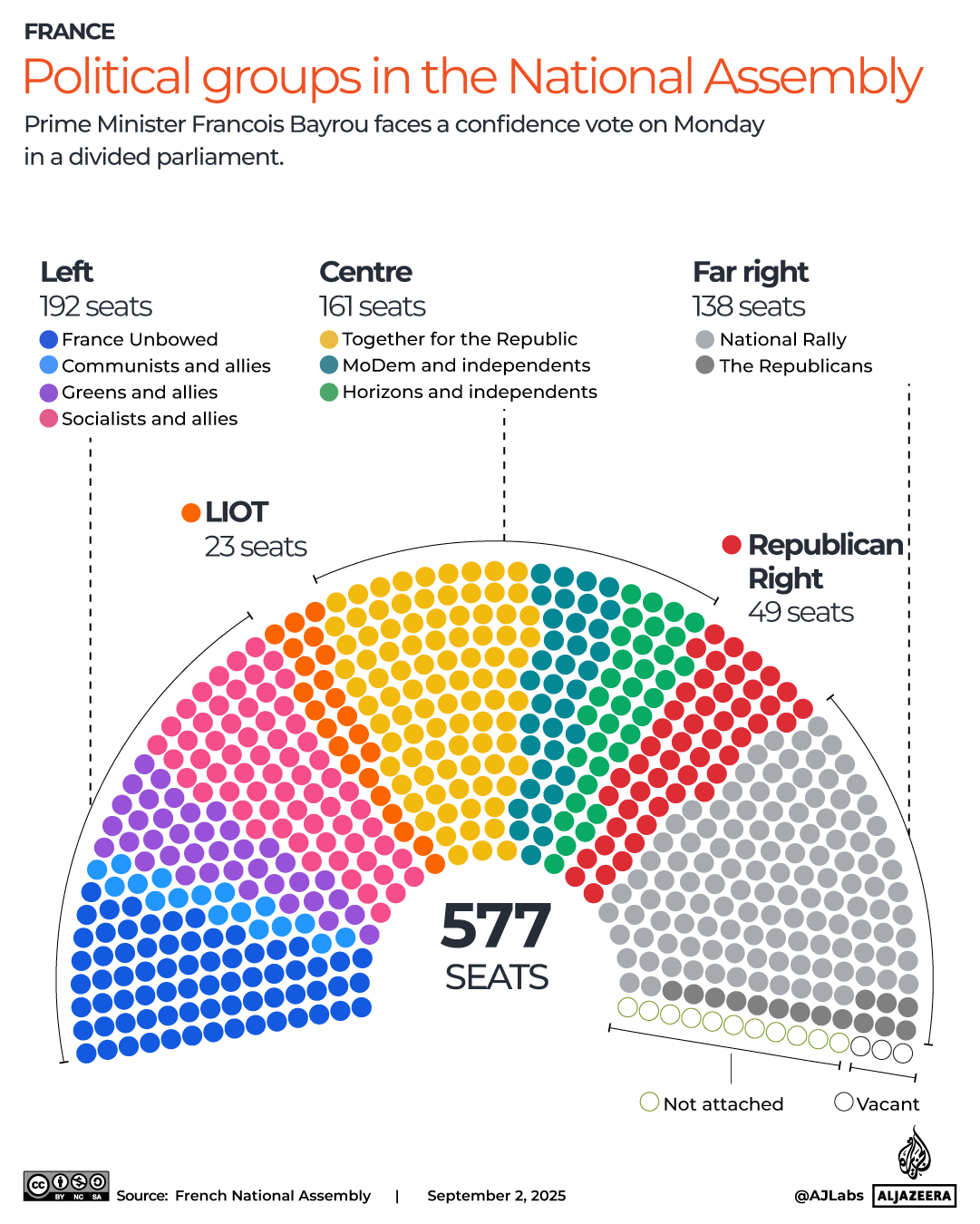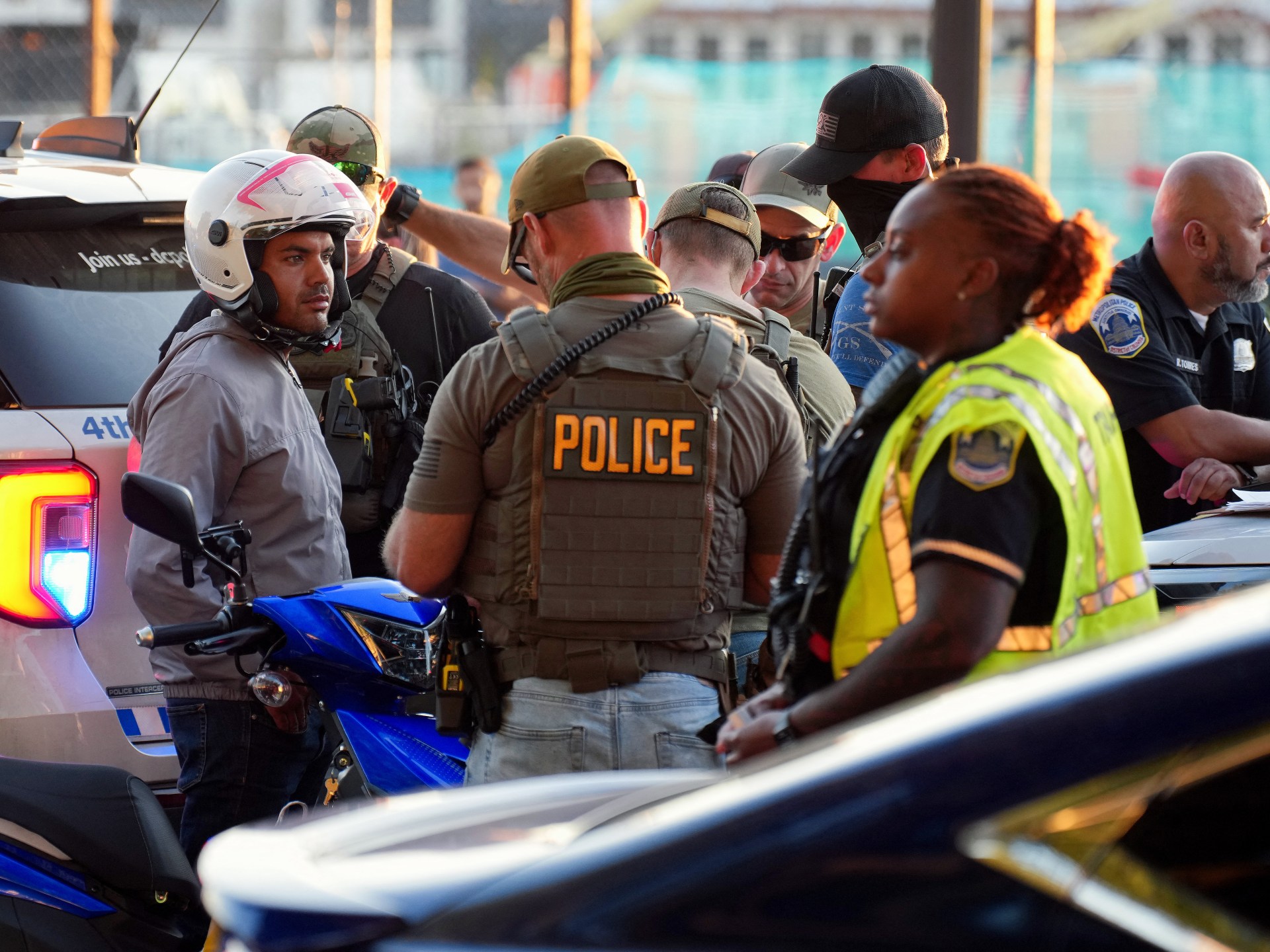President Donald Trump and his Republican allies have painted Chicago as the most dangerous city in the United States before expected immigration enforcement raids and as Trump has floated the idea of sending in the National Guard.
Trump called Chicago the “murder capital of the world!” in a Truth Social post on Tuesday.
Homeland Security Secretary Kristi Noem focused on raw homicide numbers on CBS’s Face the Nation show on August 31, saying, “For 13 consecutive years, Chicago had more murders than any other American city.”
James Lankford, a Republican senator from Oklahoma, used a similar statistic on NBC’s Meet the Press but swapped raw numbers for “murder rate”, making it inaccurate.
Meanwhile, Chicago’s Democratic defenders said Republicans overlook crime in red states.
Illinois Governor JB Pritzker, a Democrat and potential 2028 presidential candidate, said his state fared better than many others on violent crime. “Notice [Trump] never talks about where the most violent crime is occurring, which is in red states,” Pritzker said on August 31 on Face the Nation.
“Illinois is not even in the bottom half of states in terms of violent crime. But do you hear [Trump] talking about Florida, where he is now from? No, you don’t hear him talking about that or Texas. Their violent crime rates are much worse [than] in other places.”
It’s not unusual for politicians to choose numbers that favour their political message, but at a time when both sides are making seemingly opposing claims about Chicago’s crime statistics, what’s the truth?
Here are the facts to help you cut through the spin
Homicide rate vs raw numbers result in different metrics
A single word – rate – makes a big difference in terms of accuracy when discussing Chicago or any city’s crime.
It is accurate to say Chicago has led the country’s most populous cities for sheer numbers of homicides for 13 years. Homicide refers to a person killing another person, including lawfully.
Chicago has reported the most homicides of all US cities every year since 2012, according to FBI data crunched by Jeff Asher, a crime data analyst for AH Datalytics. The last city to have a higher homicide count than Chicago was New York City in 2011, said John Roman, director of the University of Chicago’s Center on Public Safety and Justice.
But it is inaccurate that Chicago is the country’s leader according to the homicide rate, the measure that is preferred by many criminologists because it adjusts the count for population size, usually homicides per 100,000 people.
Chicago had 573 homicides in 2024, preliminary police data show. It also has about 2.7 million residents in the city itself, excluding its suburbs, making it the third most populous city in the US after New York and Los Angeles.
Chicago’s homicide rate is not the highest in the US or the world.
Other cities, including small cities in red states not in the national political spotlight, have violent crime problems too.
The Trace, a news website about guns, found that “half of all shootings between 2014 and 2023 occurred outside large cities, in small cities and towns of fewer than 1 million people.” The Trace used data from the Gun Violence Archive, which tracks gun injuries and deaths.
The Igarape Institute, a Brazilian nonprofit organisation, monitors homicide rates in the US and around the world. In its most recent data from 2023, more than 100 cities around the world had higher homicide rates than Chicago, including Memphis, Tennessee; New Orleans, Louisiana; St Louis, Missouri; Baltimore, Maryland; Cleveland, Ohio; Detroit, Michigan; and Washington, DC.
The data showed that cities including Duran and Manta in Ecuador; Nelson Mandela Bay in South Africa; Camacari in Brazil; and Cajeme and Tijuana in Mexico topped the list.
Although the number of murders in Chicago has been dropping since 2022, the city still has a violent crime problem. The Trump White House sent us about two dozen local news reports about Chicago carjackings, murders and burglaries.
Pritzker misleads in Illinois-Florida comparison
Democratic governors, including Pritzker and his California counterpart Gavin Newsom, have tried to turn the focus away from their major cities and towards their states’ overall crime rates. Through this broad lens, which includes rural areas and all violent crimes, the home turf appears safer.
“Low-crime rural areas may ‘water down’ the effects of high-crime urban locales such that the overall state rate is low despite significant variation,” said Jacinta M Gau, a University of Central Florida criminal justice professor.
Pritzker referred to a US News and World Report ranking of the 50 states for violent crime rates based on 2023 FBI data. From the lowest violent crime rates to the highest, Florida ranked 22nd, Illinois was 23rd and Texas was 34th.
So Pritzker’s statement was technically accurate because Illinois was not in the bottom half of states although Florida came in marginally better than Illinois.
Academics who study crime data warned of pitfalls. Victims underreport crime to police, and police agencies’ decisions about classifying crimes and whether to submit annual reports to the FBI can affect a state’s report.
“The unreliability of crime data makes it easy for the numbers to be run so that the result supports the narrative that is being pushed,” Gau said.
Illinois has had decades-long issues with reporting correct data to the FBI, Asher said. He said Illinois’s violent crime count does not fully report Chicago’s aggravated assaults. Florida, he added, has its own data reporting issues.
There are also complications to remember when comparing crime rates across cities or states.
One reason not to make city comparisons is that city boundaries are arbitrary.
“Some cities [like St Louis] incorporate only those parts of the metro [area] that are densest, which has the practical effect of including areas with high violence but excluding wealthier areas,” which are in St Louis County and St Charles County, Roman said. In other cities, those wealthier areas are within the city boundaries.
Comparing states avoids the city boundary issue. Plus, most criminal justice law is set at the state level.
Still, the challenges of crime data mean that politicians can selectively use or criticise the data to score political points.
“Unfortunately, this is often not clear to the average person, and so it can be extremely confusing and might seem like one politician is right and the other is wrong even when a discrepancy is more apples vs oranges than right vs wrong,” Gau said.





